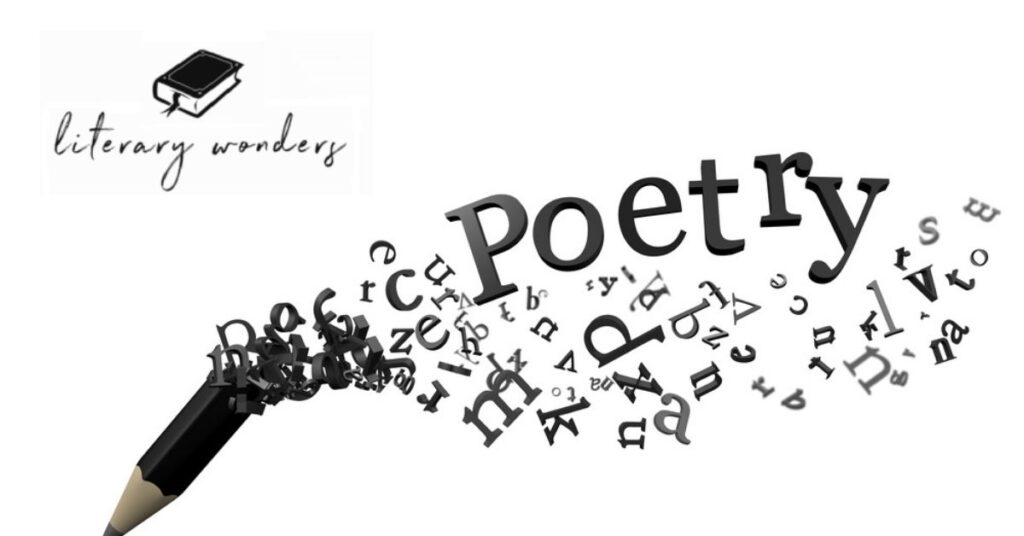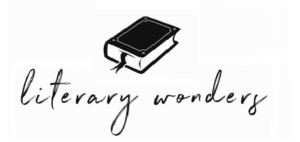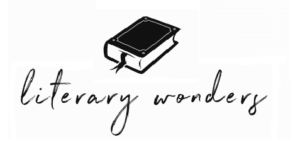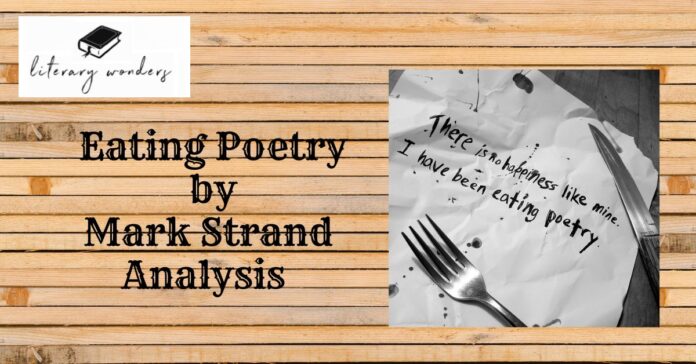
This blog, Eating poetry by mark strand Analysis, will unveil the hidden meaning of this symbolic poem. Mark strand wrote this poem in 1980, and soon after, it won various hearts across the globe due to its unique subject matter. Eating poetry is a surreal, dreamlike poem set in a small library. The poem’s narrator has been eating the magical words of the poets, and the librarian gets upset while watching his poetry-fueled actions.
The poem begins with a strange image when the speaker is eating poetry, ink is running from his mouth, and he is experiencing extreme happiness. The librarian is presenting a contrast to the speaker, who fails to understand the reason for his odd choice. She has no idea what the speaker is going through and why poetic words become the reason for his transformation. After consuming the poetry, the joy and light of the moment get dim. The dogs appear in the scene from nowhere and begin to climb up the stairs.
Although he can’t see the dogs, yet he can hear their bark. To our surprise, the dog’s leg starts to burn, and this incident further upsets the librarian. She can’t handle the situation happening in front of her. As the poem goes on, we discover that the speaker himself has transformed into a dog. He sits on his knees and starts licking the librarian’s hand, who is in complete shock upon his unimaginable transformation.
Eating Poetry by Mark Strand Themes
The poem, earing poetry, unfolds many themes, including reality versus imagination, surprise, transformation, and magic of poetry. This poem is about how the magical words of the poets and writers transform those who read and digest them. The speaker of the poem seems passionate about poetry. That is why he eats it and becomes an entirely different person
Although the title may lead us to think of a person tearing the pages, chewing, and eating, the description is metaphorical. The writer has presented us with a person who gets completely absorbed into the realm of the poetic world. His actions and reactions give goosebumps to the librarian, noticing his weird yet meaningful transformation. To the librarian, the speaker seems odd, crazy, and horrifying. However, when we cater to the speaker’s feelings, he is delighted.
From start to end, every verse of this poem brings various surprises and makes us imagine what happens when someone completely surrenders to the magic of any art. He not only feels a drastic change in himself but also makes others feel this change, too. He does not even think about the librarian, who is shocked at his destructive and animalistic behavior. In fact, poetry awakened some p A literary device in which vowel sounds are repeated quickly, such as; “light is dim” and “feet and weep.” The sound of /i/ and /e/are repeated in these verses rime happiness within the speaker which he fails to hold back.
Techniques Used in “Eating Poetry by Mark Strand”
Mark Strand has inserted various literary as well as poetic devices in this poem to express his utmost joy. The devices used in the poem are given below.
- Assonance: A literary device in which vowel sounds are repeated in quick succession such as; “light is dim” and “feet and weep.” The sound of /i/ and /e/are repeated in these verses.
2. Consonance: It is also a literary device in which consonant sounds are repeated in a sentence, e.g., “did not die” and “backseat behind.” The repetition of /b/ and /d/ shows the occurrence of consonant sounds in quick possession.
3. Imagery: Imagery is used by poets and writers to create mental images in the audience’s mind. Naomi has used this device effectively in the poem, such as; “her hands in” and “she screams.”
4. Personification: Personification is to give human qualities to lifeless objects. The writer has used this device in the opening line to personify ink, saying that it runs from the corners of his mouth.
5. Metaphor: The writer has used joy as an extended metaphor in this poem to show how it changes a person.
6. Symbolism: Symbolism uses signs and symbols to create deeper meanings in the poem. Mark has used various symbol in the poem For instance, “eating” symbolizes the understanding, “dogs” stand for strong imagination.
Stanza: Stanza is a poem’s division into two or more lines that work as a single unit. There are six equal length stanzas in this poem.










